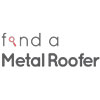When it comes to roofing options, metal roofs have gained significant popularity over the years. However, despite their many benefits, there are still several misconceptions surrounding them. In this article, we’ll debunk the top metal roof myths and give you the facts you need to make an informed decision.
Myth #1: Metal roofs are loud
One of the most common myths surrounding metal roofs is that they are loud. The truth is, metal roofs are not any louder than other roofing materials, such as asphalt shingles. In fact, when installed correctly with proper insulation, a metal roof can even reduce noise levels from external sources, such as rain or hail.
Myth #2: Metal roofs are prone to rust
Many people believe that metal roofs are prone to rust, especially in humid climates. However, modern metal roofing materials are coated with a rust-resistant layer, such as zinc or aluminum, which protects them from corrosion. Proper installation and maintenance also play a crucial role in preventing rust.
Myth #3: Metal roofs attract lightning
Contrary to popular belief, metal roofs do not attract lightning strikes. In fact, lightning is attracted to the highest point in the area, regardless of the material it’s made of. However, metal roofs are safer during a lightning storm because they are non-combustible and can help dissipate the electric charge.
Myth #4: Metal roofs are expensive
While the initial cost of a metal roof may be higher than other roofing materials, such as asphalt shingles, they can save you money in the long run. Metal roofs are durable and can last up to 50 years, whereas asphalt shingles typically last only 15-20 years. Additionally, metal roofs are energy efficient, which can help lower your energy bills.
Myth #5: Metal roofs are not energy efficient
On the contrary, metal roofs are highly energy-efficient. They reflect the sun’s rays, which helps reduce heat absorption and keep your home cool during the summer months. This can significantly reduce your energy bills and improve your home’s overall energy efficiency.
Myth #6: Metal roofs are prone to dents
While metal roofs can dent, they are not any more prone to dents than other roofing materials. Additionally, modern metal roofing materials are designed to withstand hail and other harsh weather conditions, which can cause dents.
Myth #7: Metal roofs are unattractive
Metal roofs come in a variety of styles and colors, making them a versatile option for any home. They can even mimic the look of other roofing materials, such as tile or wood, while providing the added benefits of durability and energy efficiency.
Myth #8: Metal roofs can’t be installed over an existing roof
Metal roofs can be installed over an existing roof, which can save time and money on the installation process. However, it’s important to have a professional inspect your roof and determine if it’s suitable for a metal roof installation.
Myth #9: Metal roofs are not suitable for hot climates
Metal roofs are actually ideal for hot climates. They have a high solar reflectance and low thermal emittance, which means they reflect the sun’s rays and prevent heat from being absorbed into your home. This can significantly reduce your cooling costs and make your home more comfortable in hot weather.
Myth #10: Metal roofs can’t withstand harsh weather conditions
Metal roofs are designed to withstand harsh weather conditions, including high winds, heavy rain, and hail. In fact, metal roofs have a Class A fire rating, which is the highest rating for fire resistance. They are also resistant to mold, mildew, and insect infestations.
Conclusion
Metal roofs are a durable, energy-efficient, and attractive option for any home. Don’t be fooled by the common misconceptions surrounding them. With proper installation and maintenance, a metal roof can provide a long-lasting and cost-effective solution for your roofing needs.



